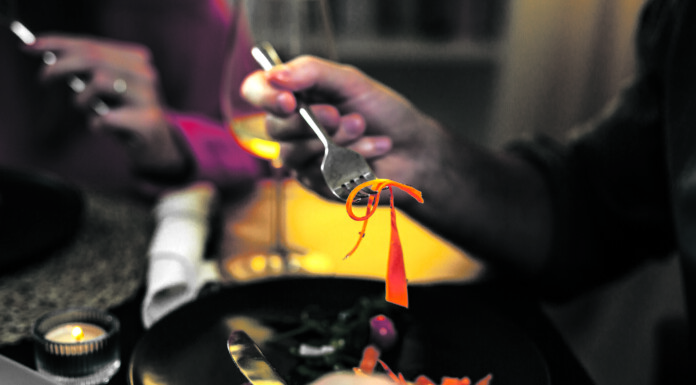Do you spear and pack, or switch and scoop?
The British method of using cutlery, popular in New Zealand, is a fork in the left hand [tines pointing down] and knife in the right. Piercing and slicing, then packing extra bits onto the fork’s back, in a coordinated partnership.
A table or steady lap is best for this.
Different European countries use variations of this method but generally keep the knife and fork working together, each utensil staying in its lane.
Americans, however, prefer the ‘silverware switch’, also called the ‘zig-zag’. They use the knife in their dominant hand to cut, while the upright fork holds things still. [While they’re there, they’ll slice up two or three bites.]
Then the knife is ditched and diners swap the fork back to the dominant hand to lift the food, like a spoon. Basically, one hand does most of the grunt work.
There are other, quirky ways of spinning the cutlery, as demonstrated by toddlers.
In Hawaii recently, on our first trip overseas for several years, we were loving the gentle ways of the Hawaiian people, the swimming in warm seawater, the American shops and the food. How we ate it didn’t cross our minds.
At an evening luau – a feast with entertainment – we were seated at long tables and collected our food from the buffet. The four of us squashed lumps of delicious pork and sweet potato onto the backs of our downturned forks. This went on for a few minutes, before we noticed the Americans sitting on either side were staring at us over their Mai Tais. Really staring.
It must look odd. Using the knife to craft little sculptures atop four curved tines, helped along by soft tubers in which to mash smaller veg.
Why balance a combo of food on the back of a narrow utensil, when flipping the fork and scooping is a safer trip? Fork-scooping is certainly handy at stand-up BBQs. But then, in a more formal setting, switching the cutlery back and forth in a constant tangle of wrists, American style, looks slow and a bit frustrating.
But reportedly, young British folk think it’s more modern, so it’ll be interesting to see how future New Zealanders choose to freight food to the cake hole.
According to an article on the website of the National Maritime Museum in London, forks were used by the ancient Greeks.
In Europe, they were considered a feminine luxury until about the 18th century, when their straight tines became curved [Germans thought of that]. Their use became accepted as more hygienic than the natural fork – fingers – at communal meals with shared food boards and pots.
Several online sources say the method of one-handed fork-eating arrived in North America from France. The French then abandoned it for the speedier system of keeping the knife and fork flashing in tandem.
The difference between American and British/Continental styles has been used as plot points in the 1946 film O.S.S. and the 2014 series Turn: Washington’s Spies, when fork etiquette threatens to expose undercover agents. Brilliant.
In Hawaii, they eat shrimp shells and all, pineapple pickled with jalapenos, coffee-coated macadamia nuts, raw fish poke bowls, meat wrapped in taro leaves and ‘Loco Moko’ [crazy burger]. Our teenagers also enjoyed delicacies called ‘Cinnabon’, ‘Chick-fil-A’ and ‘Panda Express’ – with their fingers or a lone fork.
Eating with chopsticks is quick and precise. Scooping up saucy morsels with a bit of flatbread, or spicy food with a crunchy corn chip, is equally satisfying.
Whatever your method of transport to the tastebuds, bon appétit.


